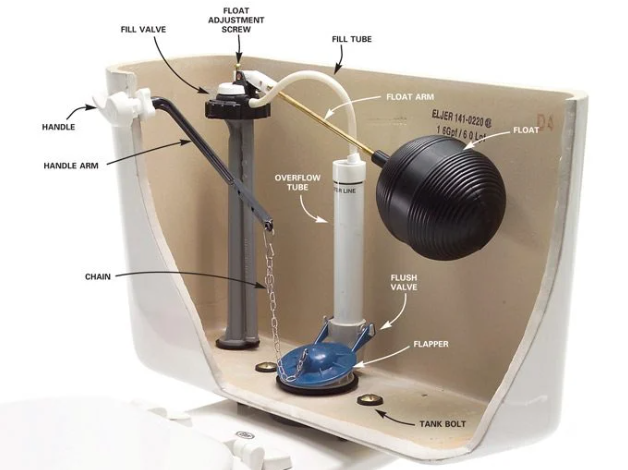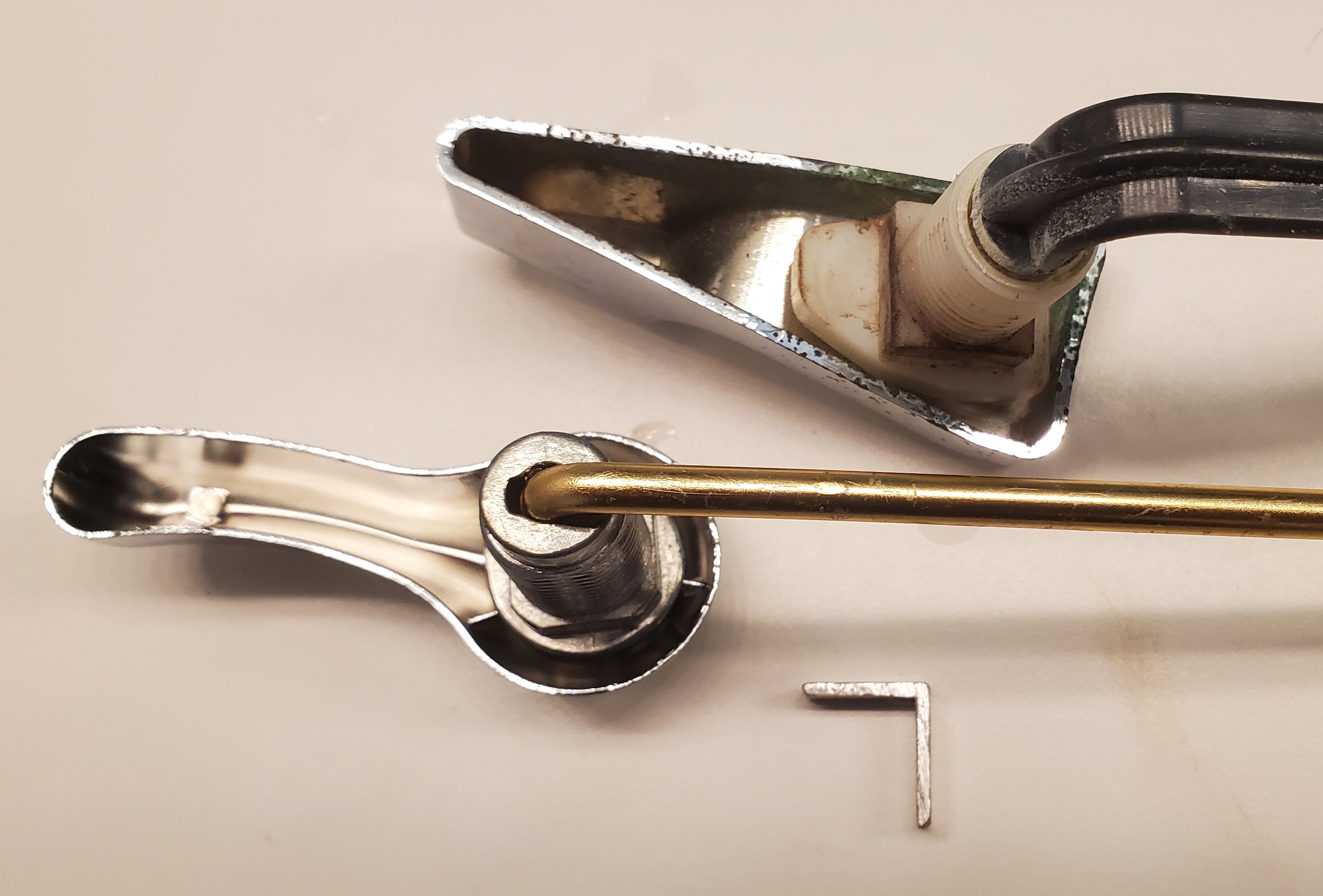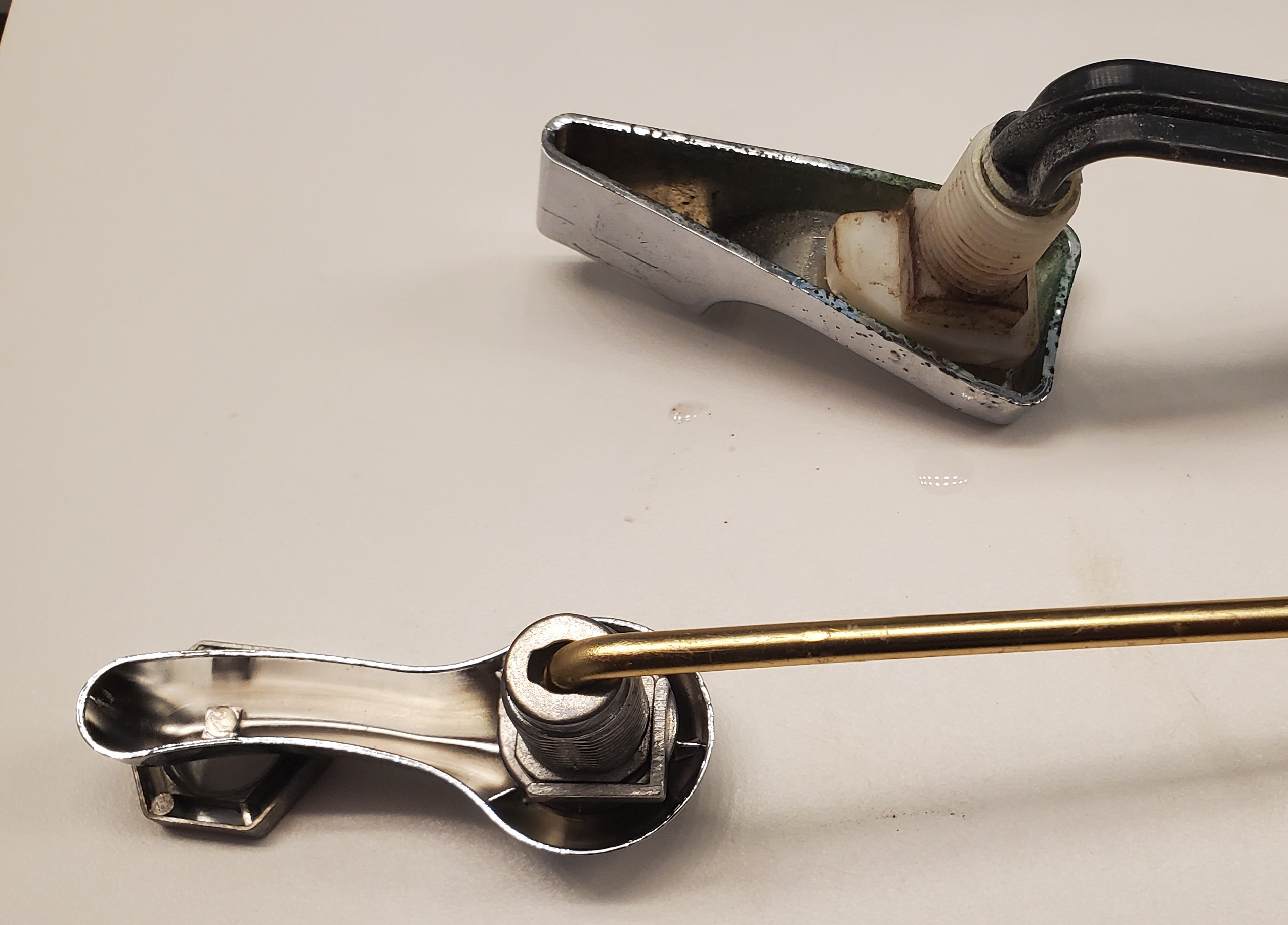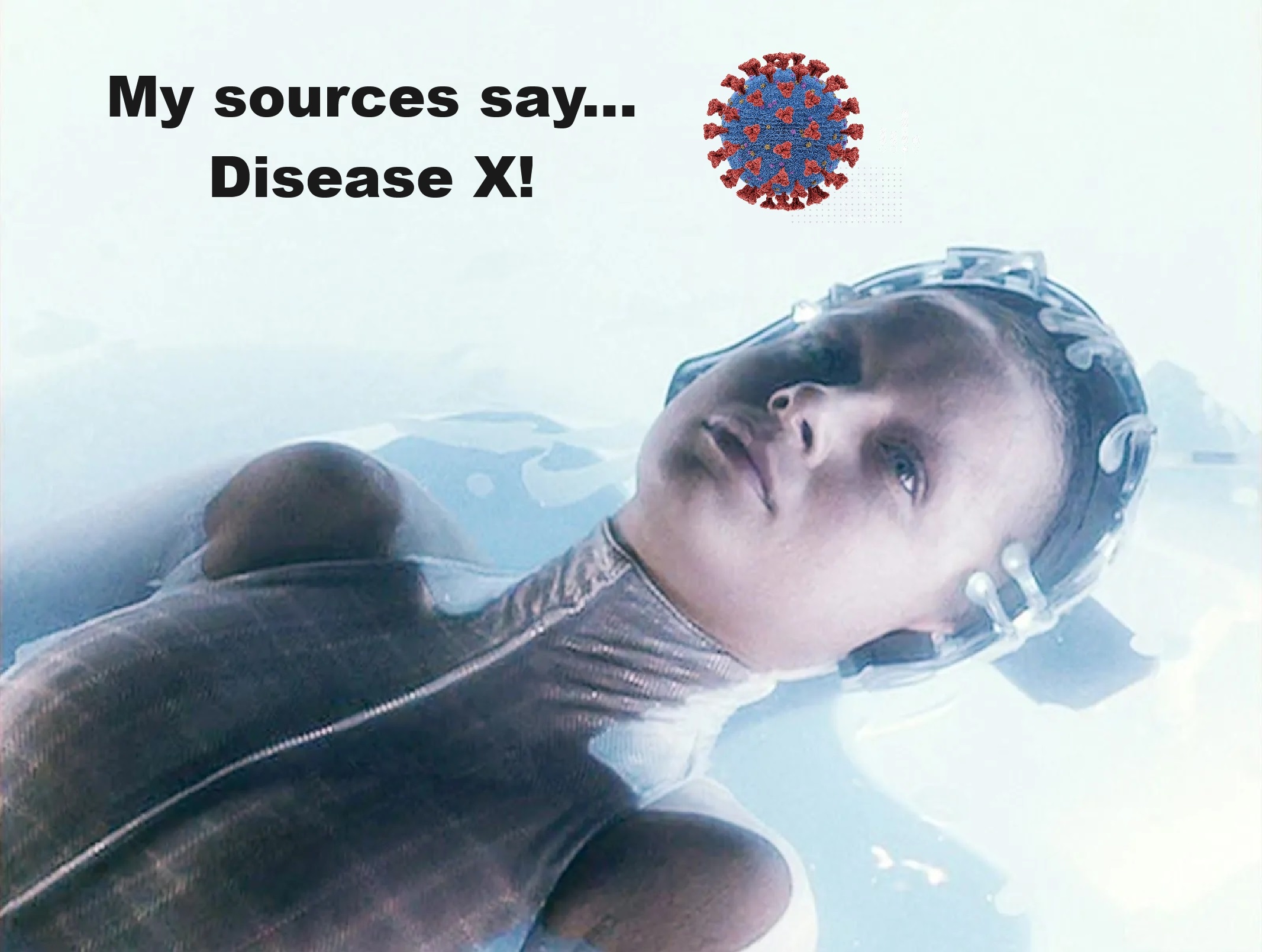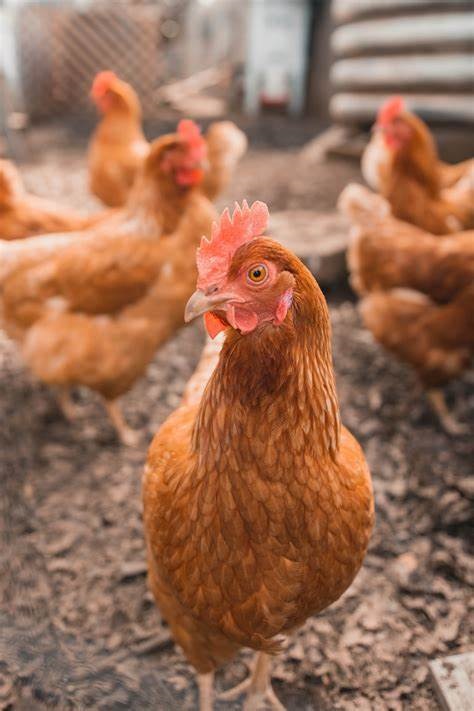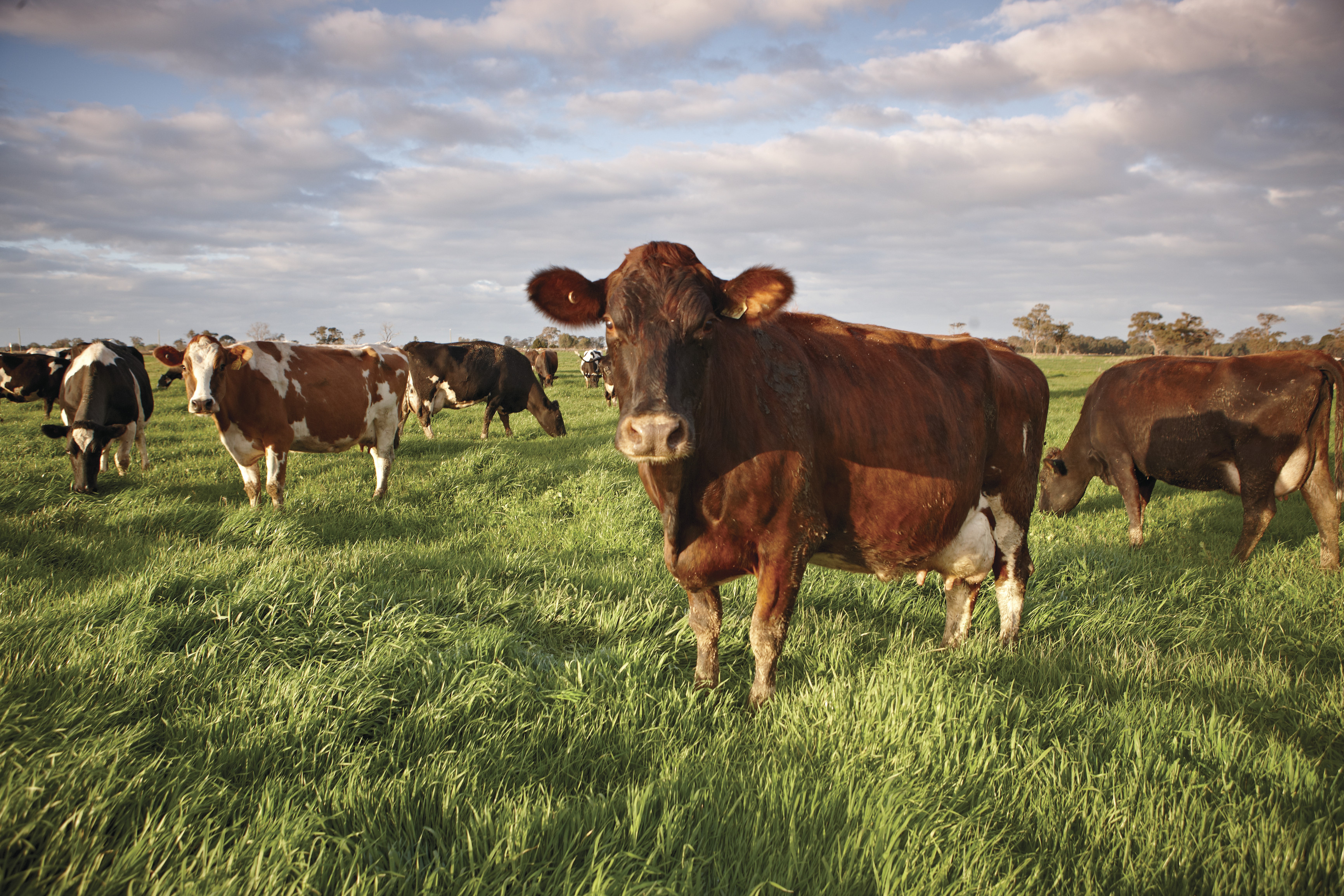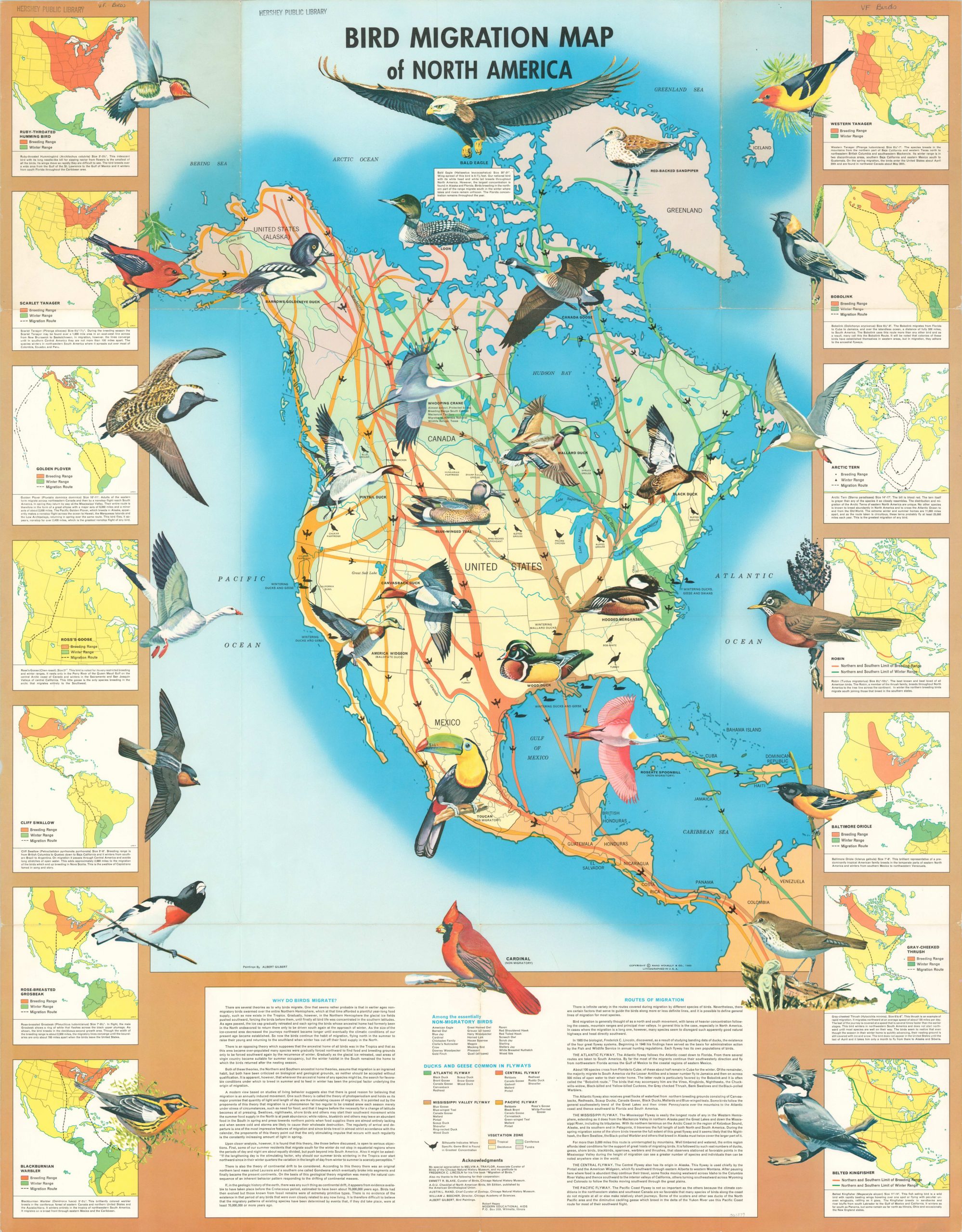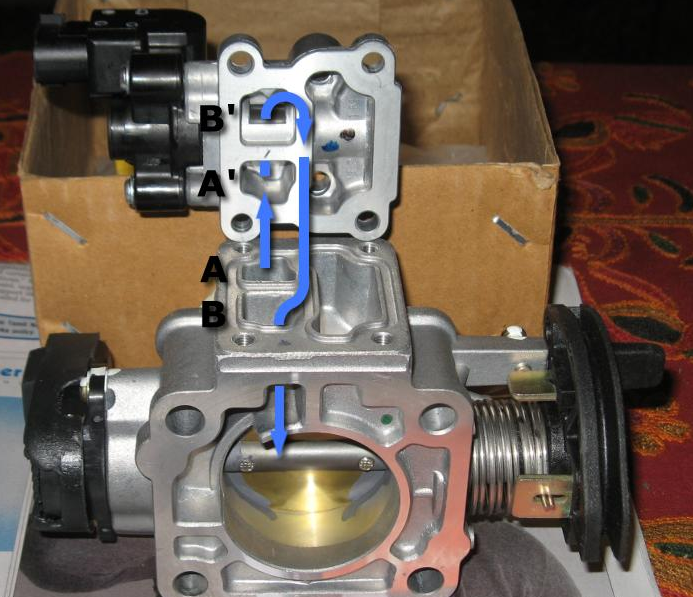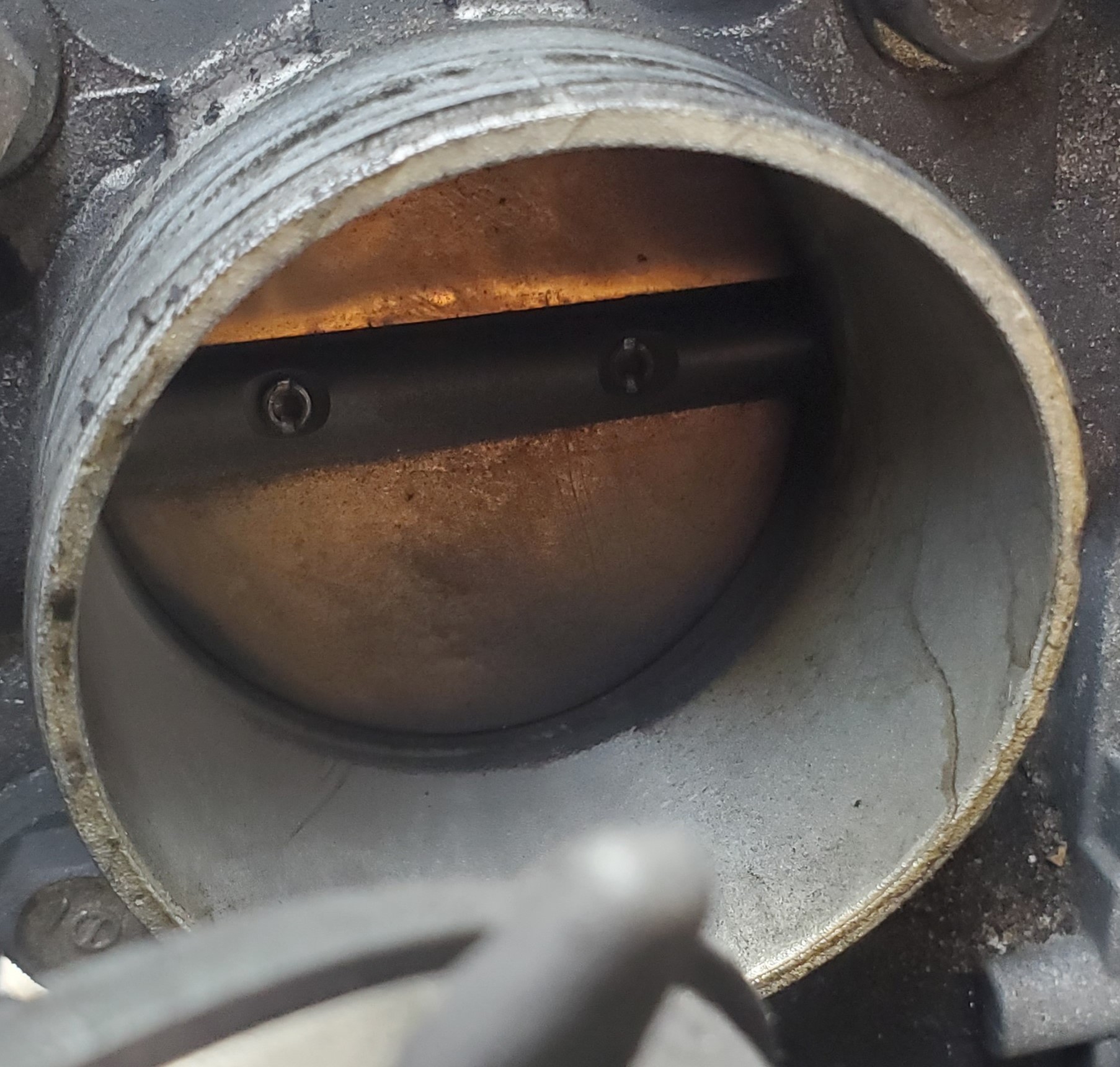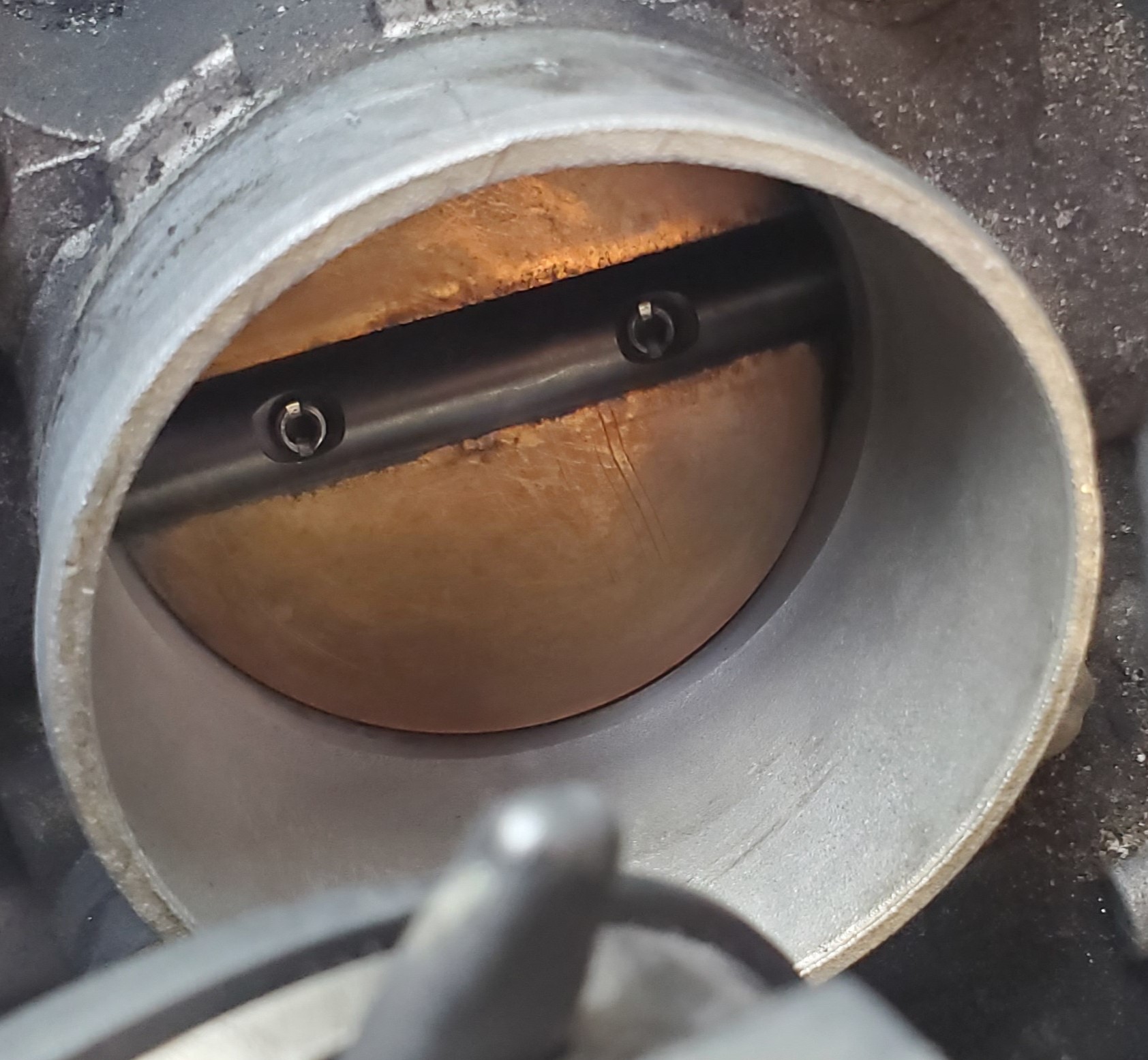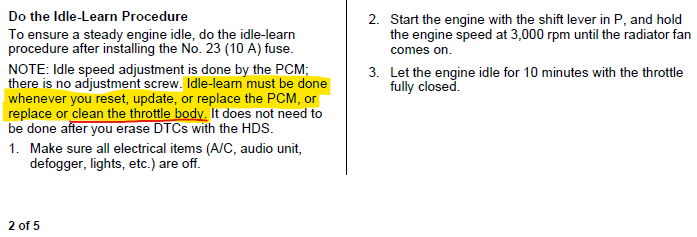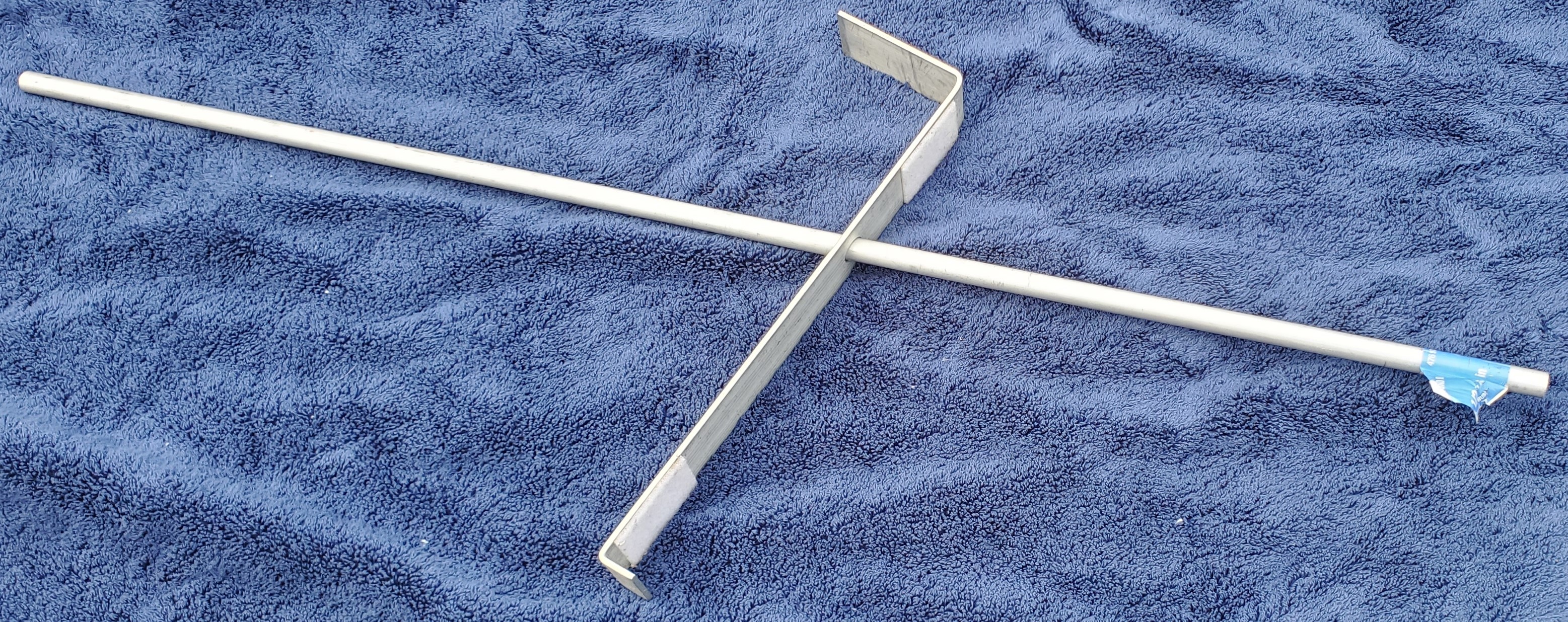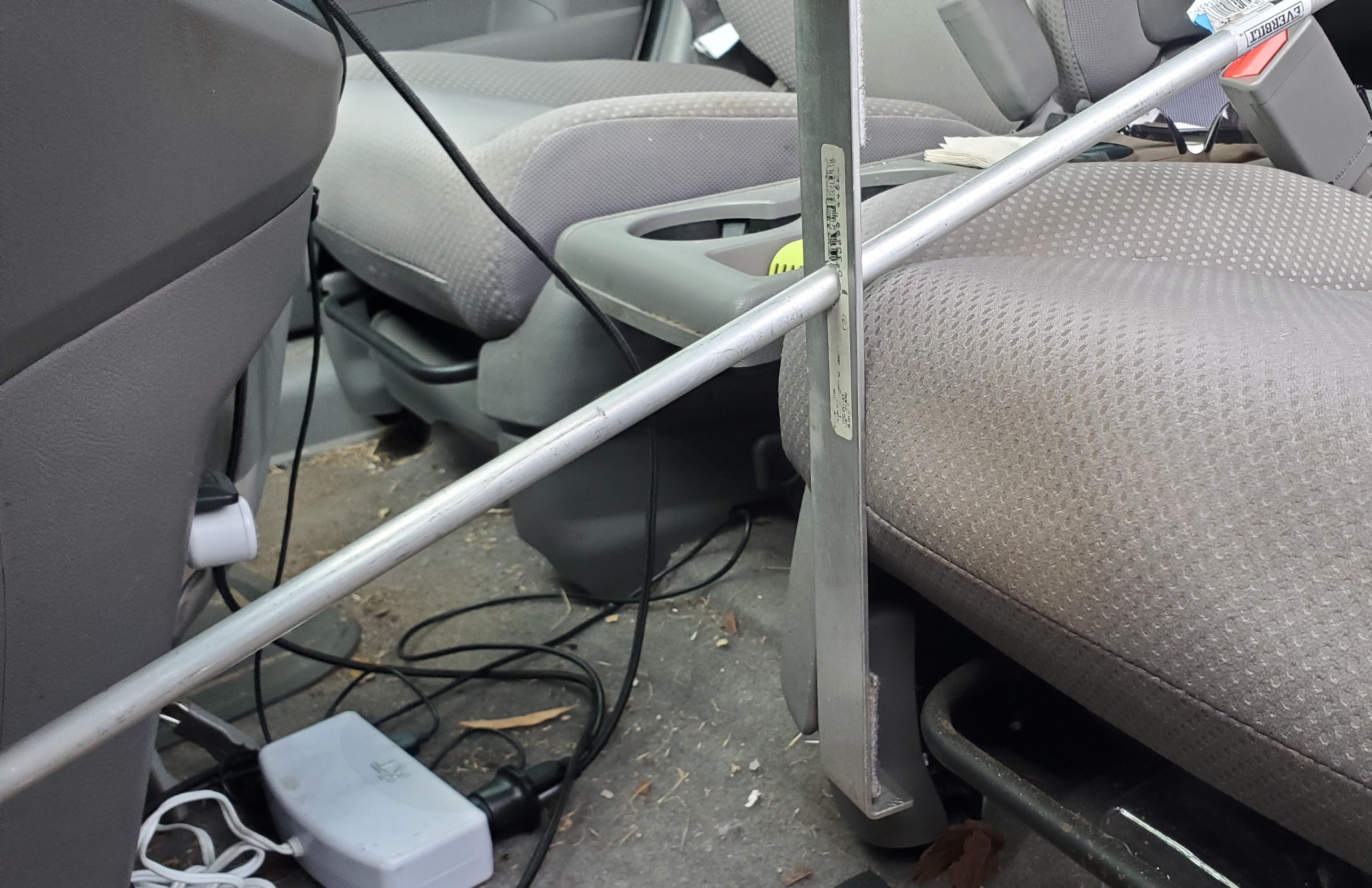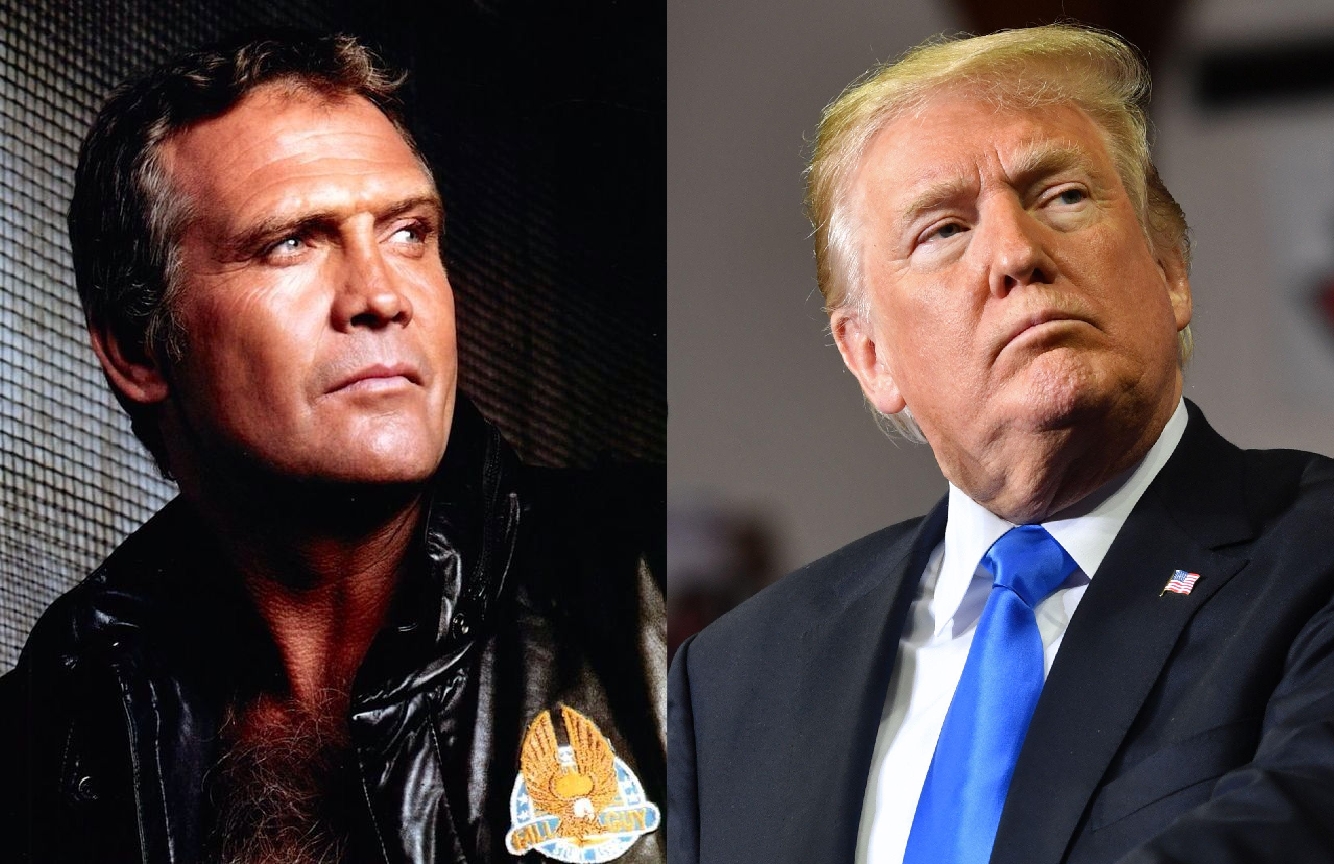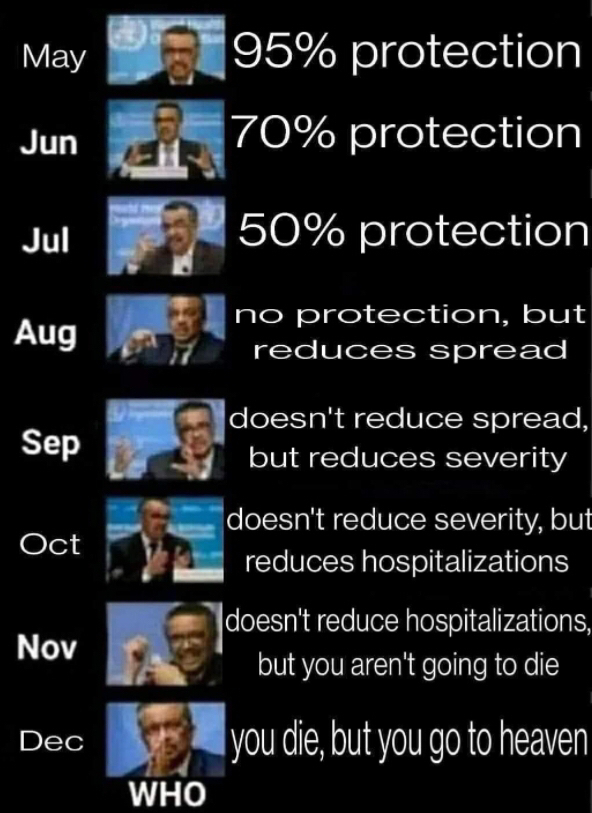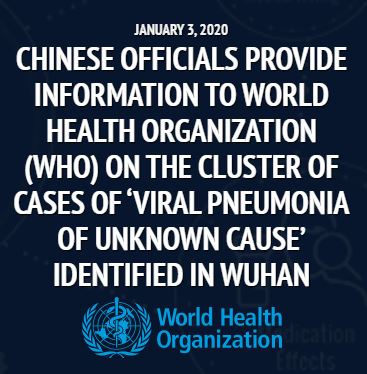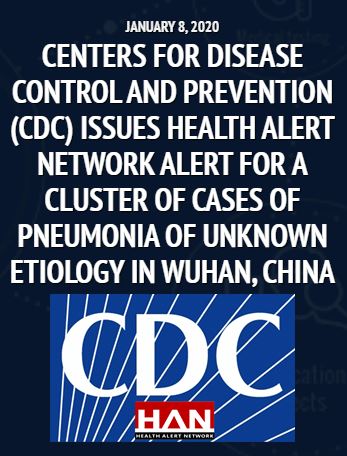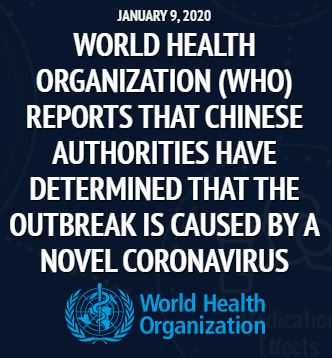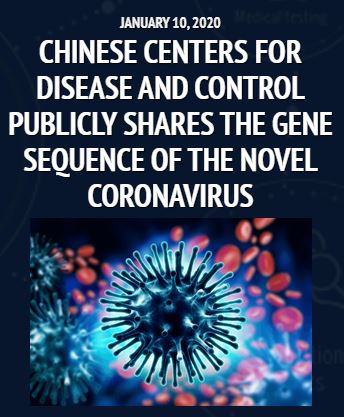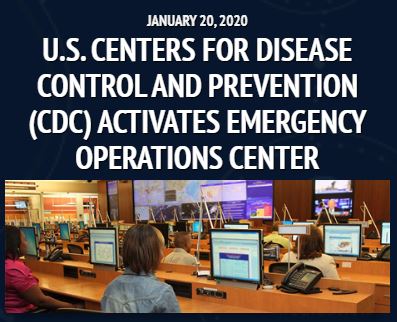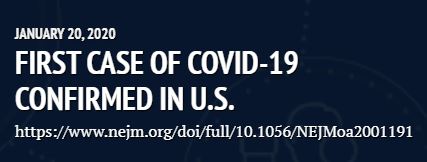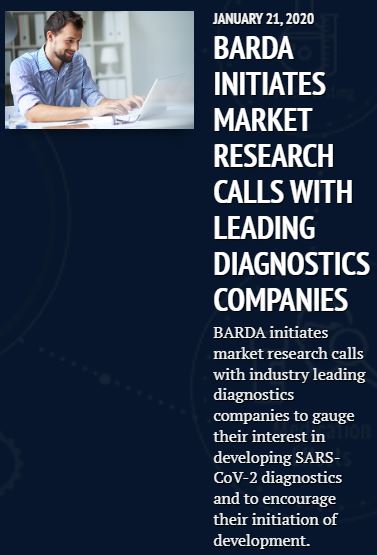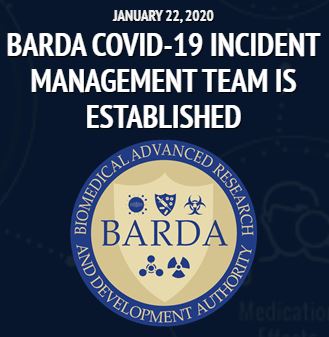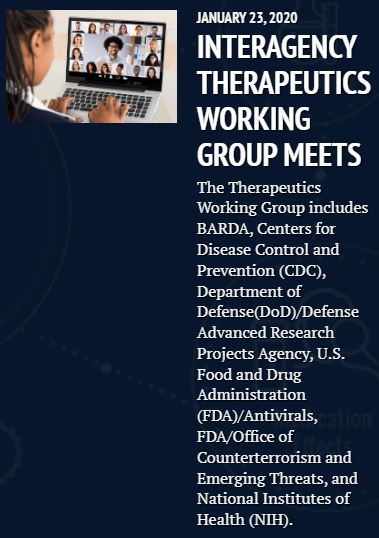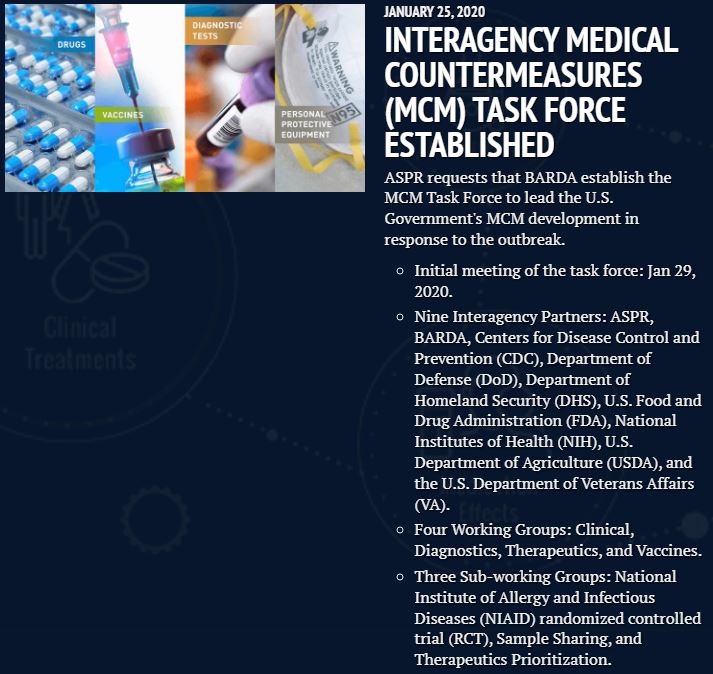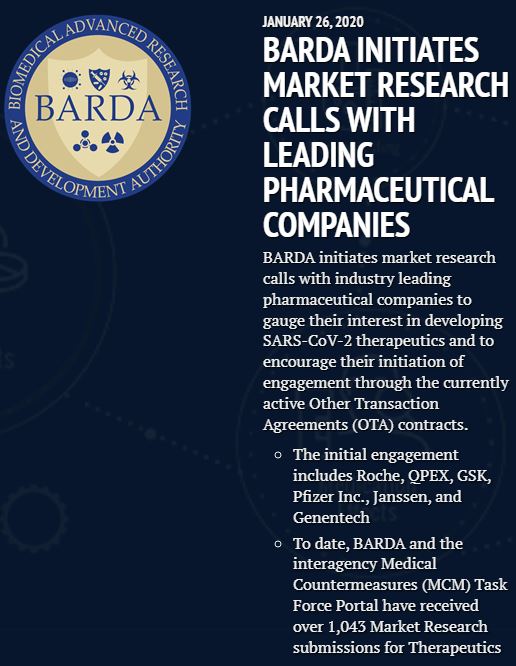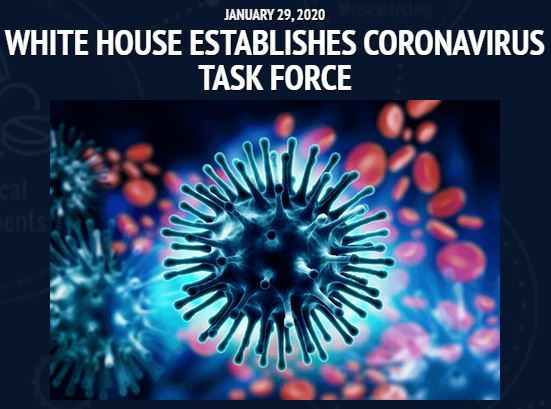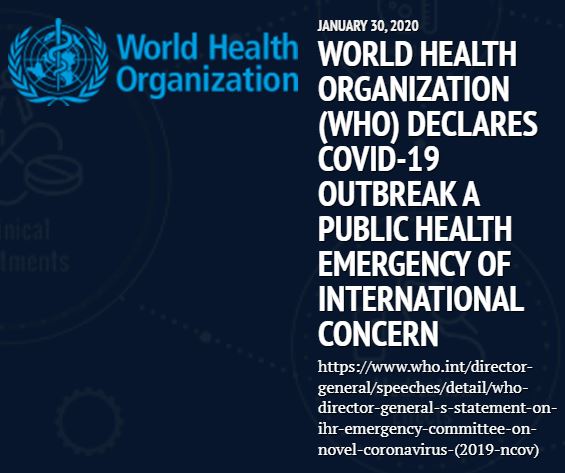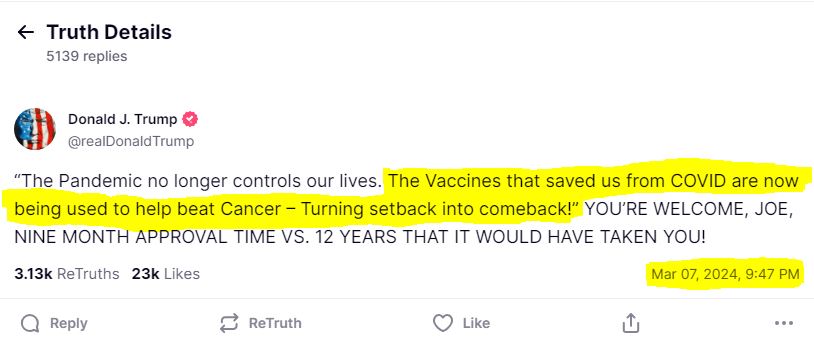A Toilet Won't Flush Itself, You've Got to "Get A Handle on It"
Recently the toilet handle in my hall bathroom has become weak. It felt as if it was flexing, or bending, within the tank when you went to flush it. Also, there was the issue of the chain getting in the way of the flapper valve. Because the handle had drooped down, the chain was able to be pulled under the flapper causing the toilet to run continuously. I'm not a jiggle the handle kind of guy. Toilets are very easily fixed in most cases, and parts are pretty cheap too.
I decided to replace my handle with one that has a metal arm. The plastic ones seem to work fine for the older toilets with the smaller flapper valves, but the metal ones are my favorite, because they never droop, or flex. When it comes to toilets with larger flapper valves, the plastic handles bend a lot before you get the valve to unseat. The cost difference is about $3 between metal and plastic.
I ran into an issue because the square opening in my tank is much larger than the square on my new flush handle. So I used a scrap piece of aluminum angle iron/stock to make a spacer. I had to do the same thing on my other toilet years ago, but I used a plastic angle piece I had lying around.
With the plastic handles you can just crank down on the nut that secures it until the handle won't rotate in the square opening. With plastic handles, there’s usually enough surface area where the handle assembly contacts the outside of the tank that it won't spin. With a metal handle, there’s very little surface area, and I don't want to crank down on the nut, because the handle will still try to spin even if tightened VERY tightly. That's not good because you could crack the tank!
You can see how the angle iron piece takes up the extra space allowing the handle to fit in the square tank opening snuggly. Because it fits snuggly, you won't have to crank down on the nut holding the handle.
This is what it looks like when the angle piece is in place.
You'll have to hold the angle iron part in place when you install the handle, or you could tape it in place with some scotch tape. Put it in, tighten the nut, adjust the flush valve chain and you're good to go.
I hope this helps someone who's run into a similar issue.
Let me know what toilet adventures you've been on! 😉👉
Please leave a comment, like it or hate it... You DO NOT need to register to leave a comment. Email addresses are NOT used. Just make one up "someone@somehost.com"
Let's Face The Truth Head-on
The WHO isn't going to stop, and the WHO's largest funder is the US government.
The list was first published in 2017 and the last prioritization exercise was done in 2018. The current list includes COVID-19, Crimean-Cong haemorrhagic fever, Ebola virus disease and Marburg virus disease, Lassa fever, Middle East respiratory syndrome (MERS) and Severe Acute Respiratory Syndrome (SARS), Nipah and henipaviral diseases, Rift Valley fever, Zika and Disease X.
“This list of priority pathogens has become a reference point for the research community on where to focus energies to manage the next threat,” said Dr Soumya Swaminathan, WHO Chief Scientist. “It is developed together with experts in the field, and is the agreed direction for where we—as a global research community—need to invest energy and funds to develop tests, treatments and vaccines. We thank our donors like the US government, our partners, and the scientists who work with WHO to make this possible.”
Once again, the idea being that they are going to catch the next disease that has pandemic potential. The "Minority Report" version of "The Science," where people are able to somehow guess which viral pathogen is going to jump from an animal host to a human.
I don't think that determining which disease might jump from animal to human is even possible. I don't believe that those at the WHO believe it's possible either. It just looks good on paper, sounds scary, and will make governments spend money.
Why do I believe this? Because of the WHO's discussions around COVID-19 and the pandemic's global impacts. The discussions have nothing to do with science.
The key giveaway in all of this is the proposed answer to what happened during the COVID-19 scare.
FOREWORD FROM
THE DIRECTOR-GENERALIn a little over 12 months the pandemic has claimed more than 2 million lives and damaged the economic and social fabric of every society. Across the world the pandemic has thrown existing inequalities into stark relief. Progress towards the Sustainable Development Goals has stalled, and in some cases may have reversed. Up to 100 million people have slipped into extreme poverty – the first rise in global poverty in more than two decades.
...
Global collaboration and solidarity
continues to be criticalUp to 100 million people may have already slipped back into extreme poverty in 2020: the first rise in global poverty in more than two decades. A study commissioned by the International Chamber of Commerce concluded that even with high vaccine coverage in high-income countries, restricted [vaccine] coverage elsewhere would cost high-income economies an additional US$ 2.4 trillion in 2021 alone. The evidence is clear: solidarity and equity are the only routes out of the pandemic.
Solidarity and equity are going to get us out of the pandemic? I thought we need to prepare for Disease X. We could have another pandemic right?
Why is the WHO worried about the United Nations' Sustainable Development Goals — and lists their stalled progress as one of the biggest setbacks caused by COVID-19? Wouldn't you imagine that the World (H-E-A-L-T-H) Organization would be more concerned about -- world health?
Why should we listen to people who are obviously aren't concerned with what they want us to be concerned with.
The WHO is very busy making sure that a vaccine/health passport system is in place though, another non-scientific endeavor. Vaccine passports were decided at the G20 Summit a few years back. They're coming no matter what.
The truth is that the entire world is being corralled into a precarious position. The WHO is at the forefront of a centrally controlled system, designed to limit people's movement globally. This has never been a concern until COVID-19 came along.
Everyone needs to ask, "If COVID-19 has come and gone, why do we need a system like this? COVID-19 obviously didn't destroy the human race, why would we assume that the next pathogen would?
What do you think?
Please leave a comment, like it or hate it... You DO NOT need to register to leave a comment. Email addresses are NOT used. Just make one up "someone@somehost.com"
Did Viruses Suddenly Get Mad At Humans Starting in The Year 2019?
Something isn't right here.
We've been told by various virologists over decades that viruses mutate, but that it's very rare that they jump from animal to human. Viruses jumping from animal to human was rare, until 2019 that is. At least that's what we're asked to believe.
Because influenza viruses are constantly changing, CDC performs ongoing analyses of A(H5N1) viruses to identify genetic changes that might allow for spread more easily to and between people, cause serious illness in people, reduce susceptibility to antivirals, affect the sensitivity of diagnostic assays, or reduce neutralization of the virus by vaccine induced antibodies. To date, no such concerning changes have been identified in HPAI A(H5N1) viruses circulating in wild birds and poultry worldwide or that have sporadically infected humans.
Currently, HPAI A(H5N1) viruses are believed to pose a low risk to the health of the general public in the United States; however, people who have job-related or recreational exposures to infected birds may be at higher risk of infection and should take appropriate precautions outlined in CDC guidance.
In Texas there are reports of cattle becoming infected with H5N1 -- and even a human.
The bird flu—also known as highly pathogenic avian influenza, or HPAI—is back, and this time, it's infecting dairy herds across several states for the first time. There's also a report that a Texas dairy worker tested positive for the virus.
On Friday, the US Department of Agriculture's (USDA) Animal and Plant Health Inspection Service reported that cows in Texas, Kansas, and Michigan have been infected with bird flu. There are indications that the virus is spreading to additional herds in New Mexico and Idaho.
This brings to mind a few questions. Why were cattle being tested for a viral infection that was not known to infect cattle? Where did this jump from bird to cattle occur? And which migratory birds follow a path that could result in the infection map that they are hopefully going to release?
But, we've been told not to worry.
Avian flu poses only a low risk to humans
It's very rare for a human to be infected with the avian virus. The first U.S. case of a person infected with avian influenza A (H5N1) virus was reported in April in Colorado. The patient recovered after experiencing a few days of fatigue.
They're getting ready to turn up the fear.
Federal agencies including the U.S. Department of Agriculture have found positive cases of highly pathogenic avian influenza (HPAI) in dairy herds in Kansas, Texas and Michigan. Presumptive positive test results have been received for herds from New Mexico, Idaho and Texas, according to the latest release from the department.
The avian flu has been discovered in other species, like sea lions, but this is the first time it has been seen in cattle. Earlier in the month, a Minnesota goat also tested positive for the virus. Experts stress products remain safe to eat, risk to the public is still low and the milk supply is not expected to be impacted.
...
“Spread of symptoms among the Michigan herd also indicates that HPAI transmission between cattle cannot be ruled out; USDA and partners continue to monitor this closely and have advised veterinarians and producers to practice good biosecurity, test animals before necessary movements, minimize animal movements, and isolate sick cattle from the herd,” according to the USDA release.
Never fear, "The Science" is here to help. If the H5N1 virus is not effecting mammals, The Science will work to make that happen?
The Dutch virologist accused of engineering a dangerous superflu a few years ago is back with more contentious research.
In 2011, Ron Fouchier and his team at Erasmus Medical Center took the H5N1 flu virus and made it more contagious. Now the team has published another study with more details on the exact genetic changes needed to do the trick.
The H5N1 bird flu is known to have sickened 650 people worldwide, and of those, 386 died. So far the virus [H5N1] hasn't been contagious in people.
But Fouchier's work, plus some similar research from another lab, showed for the first time that the virus had the potential to change in a way that would make it a real pandemic threat. Only a few mutations were necessary to make the H5N1 bird flu spread through the air between ferrets, the lab stand-in for people.
Critics argued that the scientists had created a dangerous new superflu. And they pushed for the recipe not to be openly published. They feared that others would repeat the work and either not adequately safeguard the virus or would deliberately release it.
After a long debate about security versus scientific openness, the research findings did finally appear in a journal.
...
"Two mutations enable improved binding of the H5N1 bird flu virus to cells in the upper respiratory tract of mammals," Fouchier told Shots in an email. "Another mutation increases the stability of the virus. The two remaining mutations enable the virus to replicate more efficiently."
These findings are important for keeping one step ahead of the virus , Fouchier thinks, and for helping to prepare for a possible pandemic.
"If we increase our understanding of how influenza viruses become airborne between mammals, we may be able to identify at some point which viruses [out of many that are circulating in nature], we need to keep an eye on because of public health risks," he added.
Let's assume that these claims are entirely true. Why would anyone argue for this kind of research?
Even if there are viruses that can't currently spread from human to human, who's to say that they ever will? It makes no sense to modify viruses -- in ways that likely will never occur naturally.
There is no reasonable means by which to conclude which viruses might mutate and become deadly, or otherwise harmful to humans. The entire "we need get in front of viruses" premise is utter nonsense.
With all of the virologists out there doing "science," where are the viruses which have been predicted to mutate to humans, and then did? I'll wait...
This is like "Minority Report" for viruses. "We'll stop the viruses in the 'pre-infection' phase! You know, like pre-crime."
Does this sound like "Science" that anyone can truly trust?
What do you think?
Please leave a comment, like it or hate it... You DO NOT need to register to leave a comment. Email addresses are NOT used. Just make one up "someone@somehost.com"
Cleaning Your Vehicle's Throttle Plate is Easier Than You Thought
I like to cover a large range of topics, only most of the time, they tend to be rather political in nature. However, this one is not.
A little history first. I worked on cars for about 10 years before I went into a completely different industry. During that time I acquired all of my ASE certifications, except for Automatic Transmission. I missed the automatic transmission test by one question.🤣 No matter, at the time I worked for Toyota, and we didn’t rebuild transmissions, we replaced them with Toyota remanufactured units, so I wasn’t worried about internal bearing clearances, I didn’t deal with that.
My current vehicle is a 2008 Honda CR-V, recently, it began to exhibit a slightly erratic idle. So, I went straight to the source -- the throttle plate.
Throttle plates are a disk inside a tube, more or less, they consist of a butterfly valve assembly. As such, they never close completely, because they would stick if they did. Never closing all the way means there is a specific amount of leakage which is present past the throttle plate. Usually not enough to keep the engine running though. Additional air is required and provided by an air bypass assembly with a valve in-between. This is what controls the amount of intake air when the vehicle is at idle.
The 2008 Honda CR-V uses a fly-by-wire type throttle plate assembly (there is no physical connection between the throttle plate and the gas pedal). Toyota called this design ETCS-i (Electronic Throttle Control System [with] Intelligence or just Intelligent). Which, at the time, seemed kind of strange. They were replacing a $5 throttle cable, with an electronic servo assembly for throttle control. The reason for this was safety. The electronic throttle control could override the operator in the event that the vehicle lost traction, or during other maneuvers. That was the main driver for electronic throttle control.
With cars that still use a cable actuated throttle plate, it's easy to tell when the throttle plate needs to be cleaned. Most of the time the throttle will stick. You would go to give the car a little gas, and the pedal wouldn't go down, you'd have to mash a little harder then it would move. On cars with electronic throttle control, you never feel any sticking. There's no mechanical connection, and the servo motor is strong enough to move the plate without the driver ever noticing (it won't over-rev the engine).
There is a limit to the amount of air that can bypass the throttle plate, through the bypass assembly. Once the throttle assembly becomes dirty to the extent that the normally allowed leakage is below the amount needed to meet engine load, you'll start to notice it.
Let's say that the engine requires 100 CFM to idle with no load. 50 CFM comes from the throttle plate leakage, and 50 CFM comes from the air bypass. Then you turn on your air conditioner, now the engine might require 150 CFM. No worries because the air bypass assembly can provide up to 150 additional CFM. There's 50 CFM of headroom for the air bypass, this makes up for power steering or other small engine loads. The total with throttle plate leakage and air bypass is 200 CFM.
If the throttle plate becomes dirty to the point where it's passing close to zero CFM, you'll start to see the engine load exceed what the vehicle can adjust for. Then it becomes very noticeable. You'll feel the engine bog down at times.
The correction is simple, clean the throttle plate. There are many throttle plate cleaners on the market, but many of them use chemicals that can dissolve the coating on the aluminum parts of the throttle body. Knowing precisely which ones to use can be complicated.
I go to my old standby -- gasoline. The carbon that is deposited on the throttle body assembly and throttle plate is mostly carbon. Almost like soot in the chimney of a wood burning fireplace. Gasoline will dissolve it, and allow you to clean the throttle body assembly safely, without harming the coating on the aluminum parts.
Every time your cars engine is turned off. There is residual fuel that is left in the cylinders and is not burned. That fuel vaporizes and floats up the intake contacting all of those aluminum parts. Therefore the coating used on the throttle assembly, and the intake in general is gasoline resistant.
I use a little gasoline, and an old rag to clean the throttle body assembly and the throttle plate itself. You will need to carefully remove the intake boot, and prop open the throttle so you can get in and around it with the rag, and wipe the edges of the plate, and the sides of the assembly. I use something made of wood to do this. Wood is strong enough to hold the plate open, but won't scratch the sides. I just use the back of a wooden handled wire brush, or a wooden dowel. Just use something that won't break, so you don't spend an hour trying to get it out of the vehicle's intake!
Here's what my throttle plate looked like before cleaning.
This is my throttle plate after cleaning. Notice you can see the gap around the edges more clearly now that the soot has been removed.
On most cars, simply cleaning the throttle plate is all that's needed. However, with my 2008 Honda CR-V there is an idle relearn procedure. If you have a different make of car, you'll have to scour the internet to see if there is an idle relearn procedure for your vehicle as well.
In order to run the engine at 3,000 RPM until the cooling fans come on, I used a pedal hold-down tool. We used to have these tools to lock the brakes on cars that were on an alignment rack. I remember because the tool from Hunter was around $120 back in the mid 1990s. But you can just make one out of scrap metal for free.
Here are both pieces of it apart. The aluminum slat piece was something I originally made to put Vinyl Plank Flooring together with, but I never used it. That's why there is fuzzy Velcro stuff on it. It worked nicely for this though.
When it's put together it looks like this.
Here's how it works in the car. As you can see, it presses against the seat, then against the gas pedal.
The rod binds on the slat with a hole in it. It's a super simple tool, but also super useful. You can also use it to hold the brake pedal down to check your own brake lights!
Hopefully this will help some people to get their car running right again.
What do you think?
Please leave a comment, like it or hate it... You DO NOT need to register to leave a comment. Email addresses are NOT used. Just make one up "someone@somehost.com"
Pro-Vaxxer Trump IS Lining Up to Be The Vaccine "Colt Seavers"
The Beginning
When reading this article, keep in mind that the influenza pandemic documents, and Executive Order 13887 of September 19, 2019 I'm referencing -- appear long before there was any talk of COVID-19 anywhere. However, the groundwork was being set to ramp up the mass production of vaccines "just in case of a pandemic."
From what I've seen and been able to find recently, things are not looking good for those who assumed that Trump was going to sweep in to DC and "fix" things.
There are documents from 2019, detailing the need for a new vaccine, "just in case" of a flu pandemic. Dr. Fauci warned about this in 2017.
Dr. Anthony Fauci, the U.S. government’s top infectious disease specialist, warned in early 2017 that a “surprise outbreak” would occur during the Trump administration, and he said that more needed to be done to prepare for a pandemic.
“There is no question that there will be a challenge to the coming administration in the arena of infectious diseases,” he said in a speech titled “Pandemic Preparedness in the Next Administration” at Georgetown University Medical Center. He delivered it just days before Trump was inaugurated on Jan. 20, 2017.
How could Dr. Anthony Fauci possibly "know" that there, to quote him, "will be" a pandemic during the next administration.
Enough people were worried about infectious diseases to convince the The Council of Economic Advisors to generate a report on the subject.
The document titled "Mitigating the Impact of Pandemic Influenza through Vaccine Innovation" which outlines the need for mRNA and other new vaccine technology can be found here (on the official ".gov" website). It lists mRNA as one of the emerging technologies that might be used to drastically decrease the time required to produce a new vaccine.
Here are a few excerpts from the document "Mitigating the Impact of Pandemic Influenza through Vaccine Innovation" from The Council of Economic Advisors September 2019.
Executive Summary
September 2019This report estimates the potentially large health and economic losses in the United States associated with influenza pandemics and discusses why the most commonly used vaccine production technologies are unlikely to mitigate these losses. We estimate the value of new vaccine technologies that would make vaccines available more quickly and likely improve their effectiveness in moderating the risks of pandemics. We discuss why private market incentives may be insufficient to develop new vaccine technologies or promote the uptake of existing, faster but more expensive technologies, despite their large expected value to society. And we argue that increased utilization of, and investment in, these new technologies—along with public-private partnerships, to spur innovation—may be valuable to decrease the impact of both pandemic and seasonal influenza.
...
The Council of Economic Advisors (CEA) finds that in a pandemic year, depending on the transmission efficiency and virulence of the particular pandemic virus, the economic damage would range from $413 billion to $3.79 trillion. Fatalities in the most serious scenario would exceed half a million people in the United States. Millions more would be sick, with between approximately 670,000 to 4.3 million requiring hospitalization. In a severe pandemic, healthy people might avoid work and normal social interactions in an attempt to avert illness by limiting contact with sick persons. By incapacitating a large fraction of the population, including individuals who work in critical infrastructure and defense sectors, pandemic influenza could threaten U.S. national security.Large-scale, immediate immunization is the most effective way to control the spread of influenza, but the predominant, currently licensed, vaccine manufacturing technology would not provide sufficient doses rapidly enough to mitigate a pandemic. Current influenza vaccine production focuses on providing vaccines for the seasonal flu and primarily relies on growing viruses in chicken eggs. Egg-based production can take six months or more to deliver substantial amounts of vaccines after a pathogenic, influenza virus is identified—too slowly to stave off the rapid spread of infections if an unexpected and highly contagious pandemic virus emerges.
To summarize the push for this new vaccine technology is that; in the event of a pandemic, it will help to minimize death and illness, minimize the economic impact, but most importantly illness within the general population is now considered a matter of national security. All existing "currently licensed" vaccine manufacturing tech is too slow. We need something new that can be produced faster.
This next part truly amazed me, but is illustrative of exactly what we saw during the "pandemic."
Improving the speed of vaccine production and vaccine efficacy are both important goals to mitigate pandemic risks and may also decrease the costs of seasonal influenza. Our analysis shows that innovation to increase the speed of vaccine production is key. Improving vaccine efficacy alone will be of little value in a pandemic if, as is the case with current egg-based production, the vaccine only becomes available after a large number of infections have occurred. Improving efficacy only yields value after greater speed has been achieved.
Their analysis shows that getting the vaccine manufactured, distributed and injected into as many people as quickly as possible -- is more important than vaccine effectiveness? Effectiveness is of little concern. While testing for effectiveness, the process also determines if there are unwanted side effects. Unverified effectiveness will result in unverified/unknown safety issues as well. In other words, if vaccine effectiveness is not a priority -- neither can vaccine safety be a priority. "Safe and effective" goes hand-in-hand with any injectable. You can't have one without the other.
And yet, someone, within the Trump administration, looked at this and thought, "Yeah, this is what we need here. More injectables that 'might probably' work."
Another production process, self-amplifying mRNA (SAM) vaccine manufacturing, which is patented but does not yet have an FDA-approved product, could shorten the vaccine manufacturing timeline even further. The SAM [mRNA] vaccine has been shown to be effective in mice (Hekele et al. 2013). Per interviews with government experts on influenza vaccines, both recombinant and SAM vaccines hold great promise for substantially shortening the vaccine manufacturing timeline and may provide the flexibility to engineer what would be a significant advance in the fight against influenza—a “universal” influenza vaccine.
...
Given the underprovision of pandemic risk mitigation by the private sector, the public sector [government] has a role in stimulating the development of, and demand for, newer vaccine technologies that are better able to provide pandemic preparedness. Public-private partnerships that stimulate such innovation may enhance welfare.
This publication by The Council of Economic Advisors concludes that the government, "has a role in, stimulating the development and demand for," newer vaccine technologies. What that means is that the government is going to pay private industry to develop "newer vaccine technologies" under the direction of the the government.
However, there is one component never mentioned in this document. There is no mention of liability. The reason that the private sector hasn't tried to drastically expand newer vaccine technology is because they have hit many dead ends. The mRNA technology mentioned in this publication has a very bad, and very well documented track record which is detailed in this NIH document from April 24, 2019.
I'll go so far as to say that it mRNA was/is not promising. This is not my opinion, this is well documented. Nobody has made it work, without serious complications to the test subjects. With these types of setbacks, private industry has been understandably reluctant to move forward with these newer vaccine technologies.
2019 and Beyond
Amazingly an executive order was drawn up -- and signed into law by September 19, 2019? Assuming that the first publication I cited was delivered on September 1st, 2019, the Trump administration had a whole (19) days to review the report, approve action on based on the report, draft an executive order, have it reviewed -- and signed by the 19th! Does anyone really believe that our government is this efficient? Or, was it more likely that these measures were drafted ahead of time?
Here's a link to Executive Order 13887 of September 19, 2019. You can also download a PDF version from there as well.
The entire beginning of the executive order (EO) is nearly a copy and paste of the document above. I'm going to list the parts that seem the most relevant.
Executive Order 13887 of September 19, 2019
Modernizing Influenza Vaccines in the United States to Promote National Security and Public Health
By the authority vested in me as President by the Constitution and the laws of the United States of America, including section 301 of title 3, United States Code, it is hereby ordered as follows:
Section 1. Findings. a) Influenza viruses are constantly changing as they circulate globally in humans and animals. Relatively minor changes in these viruses cause annual seasonal influenza outbreaks, which result in millions of illnesses, hundreds of thousands of hospitalizations, and tens of thousands of deaths each year in the United States. Periodically, new influenza A viruses emerge from animals, including birds and pigs, that can spread efficiently and have sustained transmission among humans. This situation is called an influenza pandemic (pandemic). Unlike seasonal influenza, a pandemic has the potential to spread rapidly around the globe, infect higher numbers of people, and cause high rates of illness and death in populations that lack prior immunity. While it is not possible to predict when or how frequently a pandemic may occur, there have been 4 pandemics in the last 100 years. The most devastating pandemic occurred in 1918–1919 and is estimated to have killed more than 50 million people worldwide, including 675,000 Americans.
...
(e) The seasonal influenza vaccine market rewards manufacturers that deliver vaccines in time for the influenza season, without consideration of the speed or scale of these manufacturers’ production processes. This approach is insufficient to meet the response needs in the event of a pandemic, which can emerge rapidly and with little warning. Because the market does not sufficiently reward speed, and because a pandemic has the potential to overwhelm or compromise essential government functions, including defense and homeland security, the Government must take action to promote faster and more scalable manufacturing platforms.
What part (e) means is that the Government must take over the vaccine industry.
Sec. 2. Policy. It is the policy of the United States to modernize the domestic influenza vaccine enterprise to be highly responsive, flexible, scalable, and more effective at preventing the spread of influenza viruses. This is a public health and national security priority, as influenza has the potential to significantly harm the United States and our interests, including through largescale illness and death, disruption to military operations, and damage to the economy. This order directs actions to reduce the United States’ reliance on egg-based influenza vaccine production; to expand domestic capacity of alternative methods that allow more agile and rapid responses to emerging influenza viruses; to advance the development of new, broadly protective vaccine candidates that provide more effective and longer lasting immunities; and to support the promotion of increased influenza vaccine immunization across recommended populations.
Sec. 3. National Influenza Vaccine Task Force.
(a) There is hereby established a National Influenza Vaccine Task Force (Task Force). The Task Force shall identify actions to achieve the objectives identified in section 2 of this order and monitor and report on the implementation and results of those actions. The Task Force shall be co-chaired by the Secretary of Defense and the Secretary of Health and Human Services, or their designees.
(b) In addition to the Co-Chairs, the Task Force shall consist of a senior official from the following executive branch departments, agencies, and offices:
(i) the Department of Defense (DOD);
(ii) the Department of Justice; [DOJ]
(iii) the Department of Agriculture; [USDA]
(iv) the Department of Veterans Affairs (VA);
(v) the Department of Homeland Security; [DHS]
(vi) the United States Food and Drug Administration; [FDA]
(vii) the Centers for Disease Control and Prevention; [CDC]
(viii) the National Institutes of Health (NIH);
(ix) the Centers for Medicare and Medicaid Services (CMS); and
(x) the Biomedical Advanced Research and Development Authority (BARDA).(c) The Co-Chairs may jointly invite additional Federal Government representatives, with the consent of the applicable executive department, agency, or office head, to attend meetings of the Task Force or to become members of the Task Force, as appropriate.
(d) The staffs of the Department of State, the Office of Management and Budget (OMB), the National Security Council, the Council of Economic Advisers, the Domestic Policy Council, the National Economic Council, and the Office of Science and Technology Policy (OSTP) may attend and participate in any Task Force meetings or discussions.
(e) The Task Force may consult with State, local, tribal, and territorial government officials and private sector representatives, as appropriate and consistent with applicable law.
(f) Within 120 days of the date of this order, the Task Force shall submit a report to the President, through the Assistant to the President for National Security Affairs, the Assistant to the President for Domestic Policy, the Director of the Office of Management and Budget, and the Director of the Office of Science and Technology Policy. The report shall include:
(i) a 5-year national plan (Plan) to promote the use of more agile and scalable vaccine manufacturing technologies and to accelerate development of vaccines that protect against many or all influenza viruses;
(ii) recommendations for encouraging non-profit, academic, and private sector influenza vaccine innovation; and
(iii) recommendations for increasing influenza vaccination among the populations recommended by the CDC and for improving public understanding of influenza risk and informed influenza vaccine decision-making.
(g) Not later than June 1 of each of the 5 years following submission of the report described in subsection (f) of this section, the Task Force shall submit an update on implementation of the Plan and, as appropriate, new recommendations for achieving the policy objectives set forth in section 2 of this order.
I know this is a long article, but bear with me here. There are few more important dates to cover.
The EO states that there's supposed to be a report generated within 120 days of its issuance.
September 19, 2019 + (120 days) = Friday, January 17, 2020.
Keep this in mind when you see these pandemic response timeline straight from BARDA's website. Everything lines up precisely. Are the people involved in pandemic preparedness literal fortune tellers?
On Friday, January 10, 2020 the Chinese government publicly shares the gene sequence of the novel coronavirus. The following Friday, January 17, 2020 is the deadline for delivery of the report from the National Influenza Vaccine Task Force. And on the following Monday January 20, 2020, (just 10-days later) the US has it's first confirmed case of COVID-19.
The response to COVID-19/SARS-CoV-2 was initiated before there was an actual pandemic declaration. Which might seem like a good thing, we were prepared right?
That is, until you realize that this series of documented events lines up precisely -- within days, to make all of these agencies and public-private partnerships come together.
The White House didn't form their Coronavirus Task Force until January 29, 2019. It's possible to assume that Trump was unaware of the steps leading up to these events. While Trump's ignorance is possible, it's not very probable.
At this point -- there is absolutely no way that Trump isn't aware of the pandemic response outcome.
In any event, everybody needs to start preparing for things going forward.
I have no reason to assume that the pandemic racket is going away under Trump. The pandemic racket was formed while Trump was in office -- and signed off on by Trump himself.
Then Trump said this during the State of The Union Show on March 7, 2024.
Keep in mind that BARDA is the medical counterpart to DARPA. Hence Medical Countermeasures.
What do you think?
Please leave a comment, like it or hate it... You DO NOT need to register to leave a comment. Email addresses are NOT used. Just make one up "someone@somehost.com"
:: Next >>
